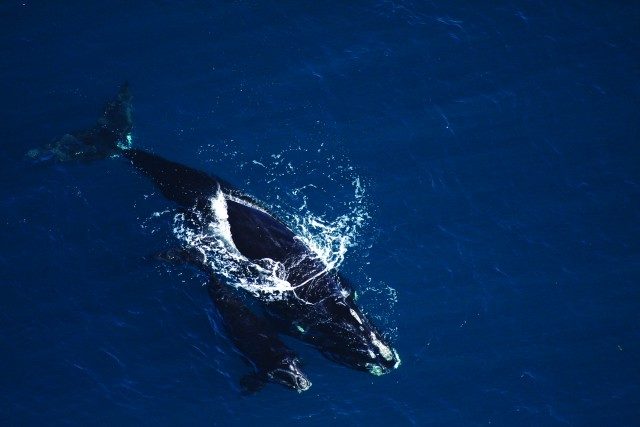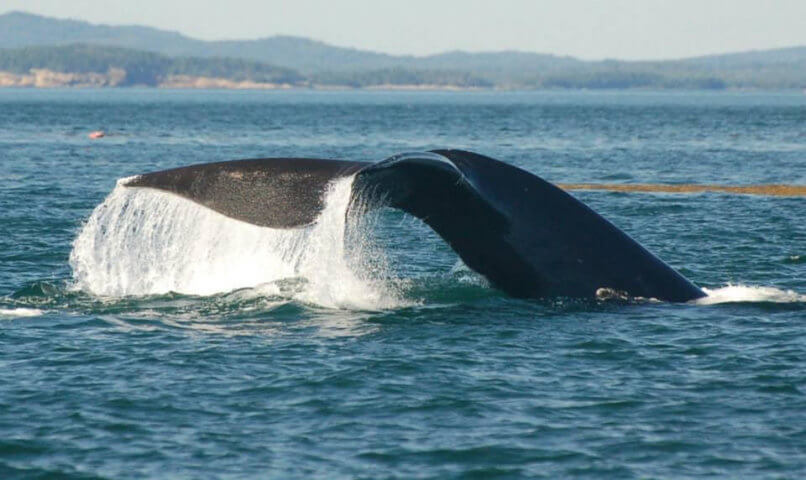The North Atlantic right whale population faced a rollercoaster of events these past few years. Here is a timeline of what the population faced, what was done about it, and future predictions.
Prior 2017
It is not unheard of for right whale carcases to be found in Canadian waters. Typically, two to three encounters occurred per year, often by vessel strikes or entanglement. From 2012 to 2016 an average of 1.2 mortalities were reported annually.
Range shift
Normally, the species is not common around the Gulf of St. Lawrence, however, in 2017 a quarter of its population visited the area.
Marine scientists say climate change is causing ‘range shifts’ to occur. This is a phenomenon where animals of all types are finding themselves moved in poleward directions, 30-130 kilometres per decade in marine environments. Copepods — which serve as a large food source for right whales — are one species doing this.
[arve url=”http://projects.thestar.com/climate-change-global-species-shakeup/images/Climate_Desktop_mediumBit.mp4″ title=”Canadian Centre for Climate Modelling and Analysis.” description=”As produced in the RCP8.5 experiment by regional climate model CanRCM4. Colours represent changes in temperature compared to start date.” autoplay=”yes” loop=”yes” muted=”yes” /]
Canadian Centre for Climate Modelling and Analysis. As produced in the RCP8.5 experiment by regional climate model CanRCM4. Colours represent changes in temperature compared to start date.
Copepods prefer cold waters because of its higher density which prevents them from sinking when they don’t want to. Populations therefore thrive further and further from the tropics as the planet warms.
As copepods move northward, some into the busy Gulf of St. Lawrence, the right whales have no choice but to follow.
Record-breaking death toll
In 2017 we were sad to witness a record-breaking death toll of right whales in Canadian waters (in and around the Gulf of St. Lawrence) — 12. An additional six were found dead in U.S. waters.
/arc-anglerfish-tgam-prod-tgam.s3.amazonaws.com/public/L4HBSZTZVBCBNLOCESVJXB5MPQ.jpg) Dead right whale in the Gulf of St. Lawrence found June 2017 (MARINE ANIMAL RESPONSE SOCIETY)
Dead right whale in the Gulf of St. Lawrence found June 2017 (MARINE ANIMAL RESPONSE SOCIETY)
Most of the deaths were suspected/determined to be caused by entanglement or vessel strikes, as reported by NOAA Fisheries.
Most people considered the first carcass as nothing too out of the ordinary. Soon after, however, bodies started to appear rapidly. At one point in June they were found three days in a row.
Since the first right whale carcasses was discovered in June, our Fundy Baykeeper, Matt Abbott, worked with stakeholders to help find solutions to the unprecedented die-off.
After the 10th death, the Conservation Council called for a mandatory slow-down of tankers in the area. The following week the federal government ordered vessels 20 metres in length to slow down to a maximum speed of 10 knots.
2018 death toll: 0
During the winter a series of measures were introduced to protect right whales.
Federal Fisheries Minister Dominic LeBlanc and Transport Canada’s Marc Garneau announced the plans at the end of March. The measures were extensive, including an earlier start to the snow crab fishing season and temporary closures around areas of right whale sightings.
Surface water temperatures along the east coast and the Atlantic Ocean in 2017 did not decrease from 2018, so the copepod situation also likely did not change. This was also indirectly observed by the numerous sightings of right whales in the Gulf of St. Lawrence.
Three deaths due to entanglement were reported in U.S. waters, however, in Canadian waters, zero mortalities were observed. The last time a year went by with zero right whale deaths in Canadian waters was 2013. This, in combination with the numerous sightings, U.S. waters’ mortalities and high ocean temperatures gives reason for Adam Burns, DFO spokesman, to say the protective measures are working and will continue.
2018 calve births: 0
Following the tragedy, for the first time in decades, no new calves were seen in 2018. This is potentially linked to the high death toll the year before – a lingering effect.

Females produce their first calf around 10 years of age, taking one year for gestation and reproduce every 3-6 years.
The enforced fishery closures lead to protests in Caraquet last summer, where lobster fishers were upset to lose two weeks during a vital point in their season.
Today, scientists, fishers and fisheries organizations are working together to develop solutions to whale entanglements to better protect the dwindling population of 411 right whales (where only 71 are breeding females) and the sustainability of important local fisheries
Vertical fishing lines in the water column pose entanglement threats to right whales. Right whales are streamlined to allow their massive bodies to reduce drag while accelerating. Even a small amount of rope can cause significant enough drag to cause death by exhaustion.
Amy Knowlton researches ropeless fishing and reduced-breaking-strength ropes, and tells CBC she believes it’s the future of fishing.
A small business based in Halifax is also working with local fisherman in the ropeless fishing development.
 Vertical lines (lines to buoy and traps) pose serious risk of entanglement to right whales (Graphic Services, Woods Hole Oceanographic Institution). The right design was produced by Halifax based company, Ashored, featuring a line/buoy that rises only when prompted.
Vertical lines (lines to buoy and traps) pose serious risk of entanglement to right whales (Graphic Services, Woods Hole Oceanographic Institution). The right design was produced by Halifax based company, Ashored, featuring a line/buoy that rises only when prompted.
With ropeless fishing in its early stages, more research put towards it would allow more affordable gear for fishers. With the advanced gear, fishers will be able to work alongside right whales without posing any significant threat.
Recommended links:
- The great global species shakeup – range shifts
- Baykeeper deeply saddened by loss of whale rescuer and veteran fisher
- What’s happening to the right whale?
- How can you help the right whale?
- Canada, U.S. launch investigation into right whale deaths
- Another right whale found dead just as scientists warn species might not last 20 years

